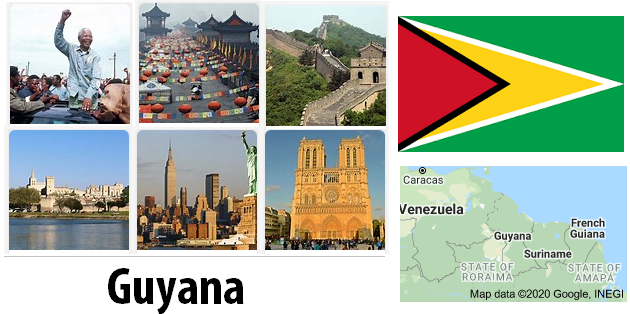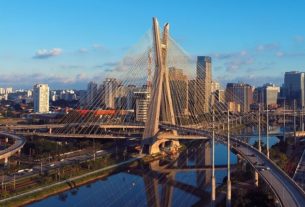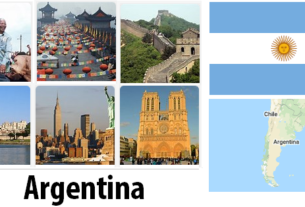In 1498, for the first time, an Italian observed from the deck of a ship the wild and forested coasts of new lands, which descended with mountain groups into the Atlantic ocean. It was thus an Italian who discovered the coast of Guyana in South America, in an expedition nominally commanded, however, by the Spaniard Halonso de Hojeda.
For a long time no one spoke of exploring the interior and the Spanish and Portuguese colonization continued elsewhere.
The name Guyana probably derives from the name of a miserable Indian village, called “Guyane”, which the first English, Dutch and French colonizers, landed there in the early 1600s, met on the coast.
The coastal strip was unhealthy and swampy, occupied by the marshy mouths of rivers. See Countryaah for population and country facts about Guyana.
 Continuing inland, the colonists had to climb the hilly slopes of the great Guyana massif, developed throughout the territory, without ever reaching great heights.
Continuing inland, the colonists had to climb the hilly slopes of the great Guyana massif, developed throughout the territory, without ever reaching great heights.
Guyana which occupies the part of the South American continent closest, as the crow flies, to Europe or, more precisely, to the Iberian peninsula, was never conquered by the Spanish or the Portuguese.
After Vespucci Guyana was touched by Vicente Yanez Pinzon, already pilot of one of the caravels of Colombo, and by other Spaniards but, strangely, no one took care of that land. Perhaps it was its swamps from which mephitic vapors rose, perhaps the appearance of its forests, that discouraged explorers; the fact is that those first English, French, but above all Dutch, belonging to the very powerful Company of the West Indies, made their first entry into the area, and immediately divided the territory into three parts that were defined: British Guyana, Dutch Guyana or Suriname and French Guiana; on each they established their respective sovereignties, with a series of peaceful agreements.
In each area the first factories were founded with exclusively commercial purposes and colonization began with abundant use of black slaves imported from Africa.
The first English colony was founded in 1604 by C. Leigh, who however was unable to maintain it permanently because it was occupied by the Dutch. Even attempts to regain it made by R. Haecourt in 1613 and 1627 went unsuccessful. But the situation resolved definitively in 1814 with the final assignment of the colony to England.
Land reclamation was started; crops were intensified, especially sugar cane, which was followed by derivatives industries such as rum and molasses.
There were many economic and social problems in the country and the protests of the Latin American countries had also continued, tending to obtain the cancellation of the colonial residues existing on the continent. In 1953 England was therefore forced to grant the Constitution: but when the elections of 23 April revealed the great power of the local People’s Party, PPP, led by the communist spouses Cheddy Janet Jagan, he had to send an expedition to suspend the Constitution.
In March 1954, an Inter-American Caracas Conference was held in which the resolution was passed to request foreign countries to grant independence to the colonies.
Jagan himself, after the assertion of his party in the elections of August 1957, obtained the Portfolio of Commerce and Industry and his wife had the Ministry of Health. All with the approval of Great Britain. But in the meantime a young black attorney with moderate tendencies, Linden Forbes Burnham, had detached himself from the PPP.
On May 26, 1966 British Guyana gained independence and became part of the British Commonwealth as an autonomous body. Its legislative power was entrusted to an elective assembly made up of 35 members.
The government administered by Burnham in 1968 had to quell a plot aimed at its overthrow and attributed to Jagan.


